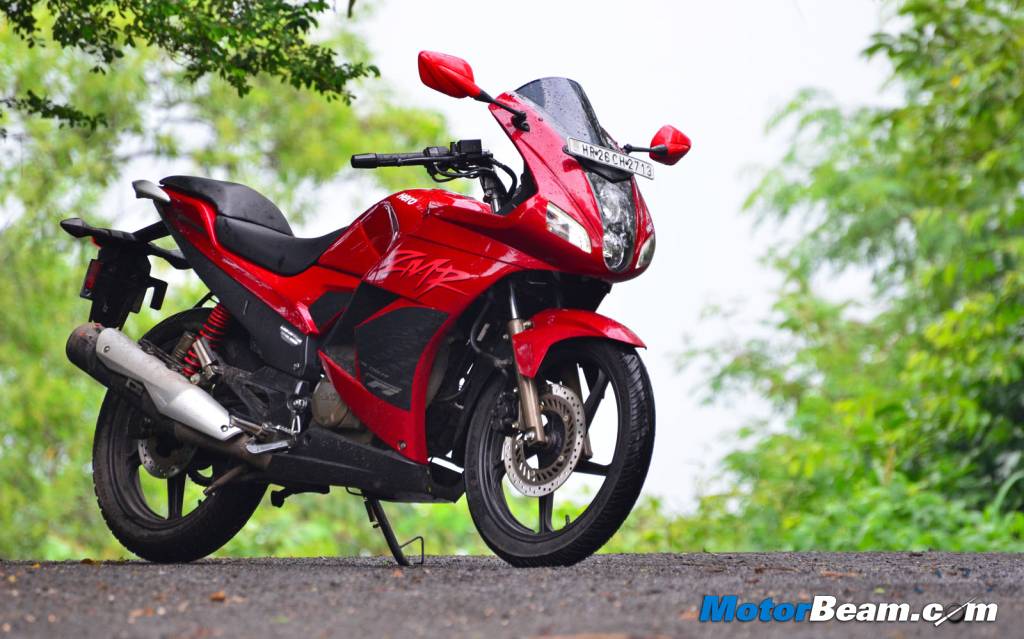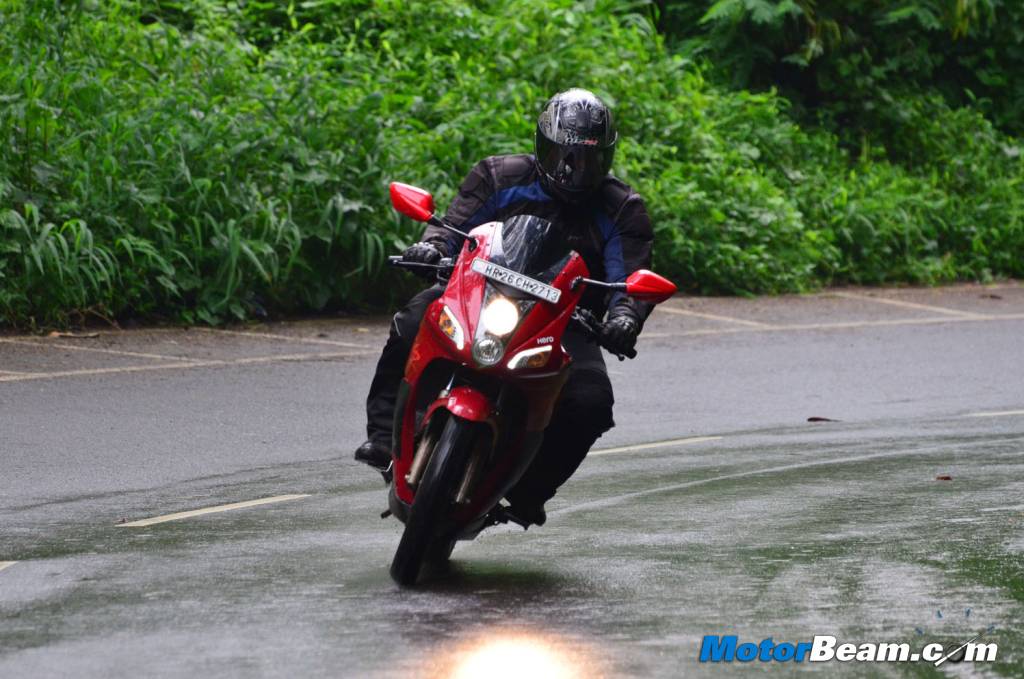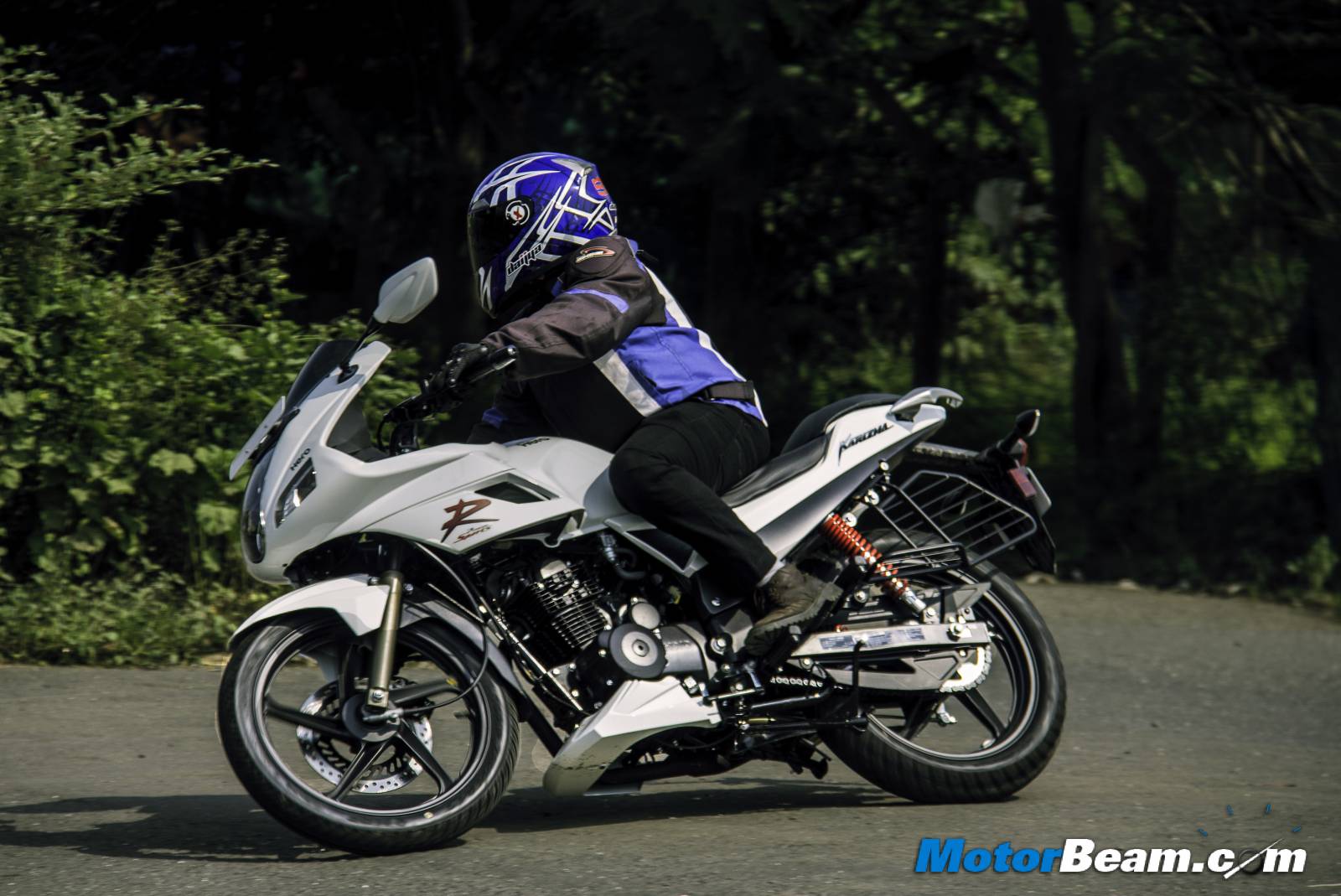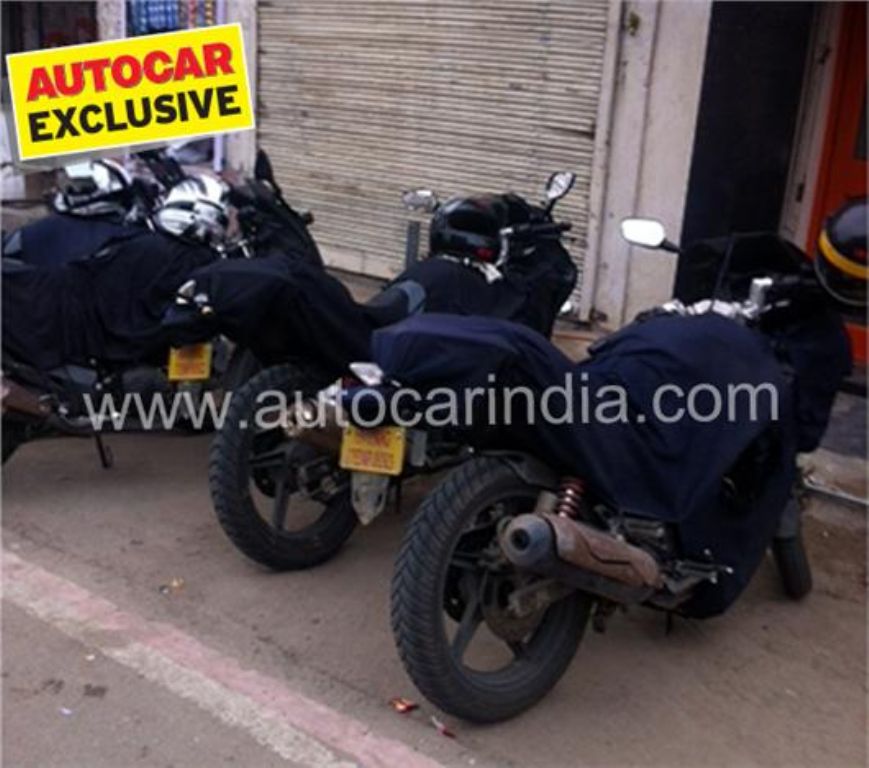Text – Mohit Soni; Pictures – Om Vaikul

2014 Hero Karizma ZMR Review
Bike Tested: 2014 Hero Karizma ZMR
Price OTR Mumbai: Rs. 1,16,100/-
The Hero Karizma ZMR finally gets a well deserved update and is very quick to the ton
The word Karizma ZMR means fairing, extra power and style for people who just want something more from Hero MotoCorp. Despite whatever happened over the last decade with the Karizma, it sold the same amount of units as other bikes in the same category such as the Bajaj Pulsar 220, 200 NS and Yamaha R15. The Honda CBR150R despite being awesome and in the same category does not even sell 1% of what these bikes are sold every month. Even if you combine the CBR250R, it is not even close to any of these bikes individually. The segment where the Karizma falls is the hottest mass market performance segment in our country and hence the company decided to make significant changes to the bike. Meanwhile, these cults motorcycles were recently compared by us and the results are already out. However, if you still don’t care about the competition and only want the famous Karizma at any cost and want to know every single thing about it, then you can stop digging for more because here comes our comprehensive review of Hero’s flagship offering.
Motor Quest: Hero Honda launched the Karizma in 2003 with the ZMR version making its debut in 2009. Earlier this year, both the Karizmas were updated with the changes coming courtesy of EBR.
It is the side profile which is sign of a relief when compared to either ends
Styling – Well to start with, it is a very long motorcycle in profile. So long that it can give cars a run for their money. The heavy front and slim tail design obviously don’t go hand in hand. The front-end clearly looks finicky with those un-proportionate vertically stacked headlights and weird style of LEDs which run in parallel with the turn indicators. The light throw illumination is average and the spread is extremely limited. The good bits on the motorcycle include the side fairing panels which are much sleeker and sharper than before and definitely look better than the old ZMR in every single way. The tail looks awkward with the tail-piece being sharp as a knife’s edge but does not serve the purpose well with the oddly mounted tail light. We think it is just done to make the fat rear tyre visible as much as possible to attract potential customers on the road. The tacky body coloured mirrors are just not right, they only look good in scooters, not motorcycles. It seems this tacky job (all around) is done to please a set of customers which we believe belong to rural markets. Overall, it does look substantial but in the wrong way, at least to our eyes.
A slightly committed riding position robs the Karizma its tag of a comfortable tourer
Ergonomics – Gone is the upright seating position of the old Karizma ZMR which was the most crucial aspect of the bike. You sit high up with the bars way down making your back and wrist endure all the pain. The bike was extremely comfortable and was a sports tourer but frankly those days are gone. The seats are well padded and are good on length but not breadth. Big riders are already warned, this is not a comfortable motorcycle for you. The committed riding position robs it of comfort but on the flip side, it makes you feel that you are riding a big bike like any other bike in this segment. Rearset footpegs are a standard norm on these bikes and your knees lock in with the slim fuel tank easily. The pillion seat is more comfortable thanks to the split arrangement and split grab handles help him/her to grip on to something. Mirrors are huge and give good visibility of what’s behind. However be careful in stop go traffic as it is bound to scrape at a moment’s notice.
Instrument cluster is the same old unit with nothing new and so is the switchgear
Instrument Cluster And Switchgear – In the form of written messages for the safety of the rider, the cluster of the ZMR tells you side stand indicator warning and to fasten your helmet strap. Meanwhile you get engine warning light, high beam indicator while the neutral shift light takes time to pop up on the screen once you shift into neutral. You get two trip meters, clock and an average fuel consumption display which is constantly changing to tell you the current km/l at your riding speed. You get a speedo error free cluster (VBOX and cluster numbers are ditto same). The digital tachometer just about satisfies your need and greed and does the job quite well. Like any Honda bike switchgear, the one on the ZMR is more than a decade old and does not have an engine kill switch. No bump in power would have been appreciated but this kill switch is now the need of the day in the year 2014.
The new Karizma ZMR is much faster than the old model and that’s quite apparent
Performance – Powering the Karizma ZMR is the identical 223cc engine as the old bike but it just gets more horsepower somehow. Hero did not say how they did it but the power bump is across the range and the gearing has not changed one bit, the engine still makes most of the power in low and mid-end of the rev range. The top speed has increased to more than 130 km/hr and 0 to 60 km/hr timing is 4.42 seconds while 0-100 km/hr takes 11.26 seconds which is faster by 1.7 seconds than the older version we had in our long term garage. All numbers are VBOX verified with a 70 kg rider on board. First gear maxes out at 37 km/hr, second at 67 km/hr, third at 91 km/hr, fourth 114 km/hr and fifth takes it all the way to 135 km/hr. The Karizma ZMR starts feeling very sluggish post 110 km/hr and ducking down makes a huge difference in reaching the top speed.
[youtube:https://www.youtube.com/watch?v=AIAMCoZ2-t8 540 375]
The ZMR loves the low and mid-end of the rev range and the narrow power band makes it quick in the city
This 2-valve engine is same in terms of refinement and the motor is almost butter smooth when kept under 5000 RPM. There are vibrations from the engine in the mid and top-end of the rev range which is slightly more than before and are felt on the handlebars and footpegs. The gearbox is slick (but with time finding neutral becomes a task as we have seen with every Karizma till date) and has short throws which also supports clutch-less up-shifts, making them very easy to execute. City ride-ability is good but you should be in third or fourth gear and not stay in fifth like other 2-valve rivals because this cog is way too tall which as you can imagine helps on the highway. 100 km/hr in fifth gear results in 6000 RPM on the tachometer while redline comes in at an early 8500 RPM. 28.5 km/l in the city and 33.5 km/l on the highway despite enthusiastic riding were the fuel economy numbers we got on the new ZMR. These numbers are slightly less than the old ZMR. Overall, refinement and economy take a very minute beating but performance numbers are much better but only in the place were it has always excelled, low and mid-end. The bike still lacks a punch on the top-end but the improved performance makes it a very quick machine. To put it in perspective, the new ZMR will easily beat the Yamaha R15 in outright acceleration while beating the Pulsar 220 by the slightest of margins.

Riding Dynamics – The chassis on the Karizma ZMR also remains the same single-downtube diamond frame which has been there since day one. There are no changes to the underpinnings or suspension damping either. Suspension on the front in typical Honda fashion remains lifeless and offers no communication or feedback whatsoever. The steering is light and the turn-in is crisp but not superlative as the competition. The long wheelbase and heavy kerb weight does not make it fun to throw the ZMR around tight corners. You end up feeling the weight at the limit due to the softer suspension setup despite the spring numbers indicating that it is on the stiffest setting.
High speed stability is hairy but ride quality is good courtesy of the soft suspension
The front tyre size remains the same but finally a 120 section rear tyre comes on the Karizma instead of the puny 100 section we saw for a decade. Tyres and grip levels are good but the rubber doesn’t inspire maximum confidence like new age tyres should. It does take sweepers very well like its twin shock setup rivals and feels stable mid-corner at the same time. At high speeds, the Karizma ZMR does feel hairy and despite the long wheelbase and slightly high kerb weight, it gets unsettled when a fairly large bump comes in contact with the motorcycle. Disc brakes on both ends provide good stopping power but they are not very feedback rich.
The Karizma ZMR tries to make a comes back at a time when rivals have grown by leaps
Verdict – After ages of running around with colour and sticker updates, the Karizma gets the power bump and revised styling, which is almost after a decade. It is a classic case of too little, too late. The competition has gone up by several notches and they are far more better than the Karizma, offering more value around the same price tag. Hero has done a goodwill gesture of raising the price very minutely. There are a lot of Karizma fans who have been waiting for this day and they do get the performance bonus they always needed. Hero service and sales is always there to further extend your peace of mind. If you are one of those Karizma fans, then there is no stopping you from getting this bike because there is no denying that the cult that the Karizma is as a brand, is simply unbeatable.
The Karizma ZMR loses its core abilities but still manages to put a smile on many faces when we tested it on the road. After looking at the performance numbers which are the same as the competition, there is indeed space for the Karizma mostly because our nation is ruled by Tier-II and III towns. If you don’t care about the competition and want a no-nonsense fast bike, then this is it.
Don’t like the Karizma but still want a Hero? Quarter-litre bike is on the way
What’s Cool
* Improved Performance
* Ride quality
What’s Not So Cool
* Loses touring abilities
* Styling (subjective)
The Karizma ZMR loses practicality but it gains plus points which are catching attention
2014 Hero Karizma ZMR Specifications
* Engine: 223cc, oil-cooled, SOHC
* Power: 20 HP @ 8000 RPM
* Torque: 19.7 Nm @ 6500 RPM
* Transmission: 5-speed
* 0 – 100 km/hr: 11.26 seconds
* Top Speed: 130 km/hr (VBOX)
* Fuel Consumption: 30-35 km/l
* Fuel Type: Petrol
* Frame: Diamond Frame
* Suspension: Telescopic Forks (Front), 5-Step Adjustable Dual Shocks (Rear)
* Tyres: 80/100/18 (Front), 120/80/18 (Rear)
* Brakes: 276 mm Disc (Front), 240 mm Disc (Rear)
2014 Hero Karizma ZMR Dimensions
* Length x Width x Height: 2100 mm x 805 mm x 1175 mm
* Wheelbase: 1350 mm
* Ground Clearance: 159 mm
* Seat Height: 795 mm
* Fuel Tank Capacity: 15.3-litres
* Kerb weight: 157 kgs
Further Reading –
Hero Karizma ZMR First Ride Review
Hero Karizma ZMR vs Pulsar 200 NS vs Yamaha R15




